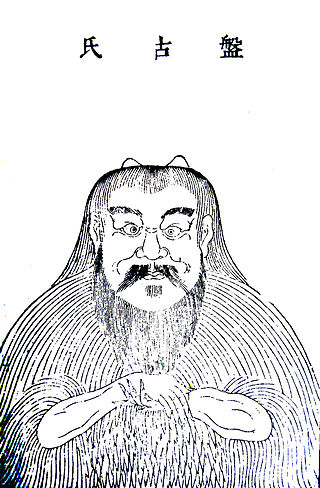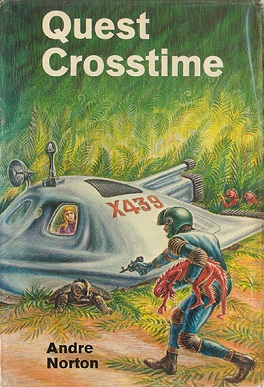
The Wayseries is a trilogy of science fiction novels and one short story by American author Greg Bear published from 1985 to 1999. The first novel was Eon (1985), followed by a sequel, Eternity and a prequel, Legacy. It also includes The Way of All Ghosts, a short story that falls between Legacy and Eon.

Pangu is a primordial being and creation figure in Chinese mythology and Taoism. According to the legend, Pangu separated heaven and earth, and his body later became geographic features such as mountains and roaring water.

Orion's Arm is a multi-authored online hard science fiction world-building project, first established in 2000 by M. Alan Kazlev, Donna Malcolm Hirsekorn, Bernd Helfert and Anders Sandberg and further co-authored by many people since. Anyone can contribute articles, stories, artwork, or music to the website. A large mailing list exists, in which members debate aspects of the world they are creating, discussing additions, modifications, issues arising, and work to be done.

Quasar is a fictional superhero appearing in American comic books published by Marvel Comics. He is one of Marvel's cosmic heroes, a character whose adventures frequently take him into outer space or other dimensions. However, Quasar deviates from the archetype of the noble, dauntless alien set by such Silver Age cosmic heroes as the Silver Surfer, Adam Warlock and Captain Marvel (Mar-Vell) in that he is an everyman. He starred in an eponymous monthly ongoing series written by Mark Gruenwald that ran for sixty issues beginning in 1989 and has served as a member of The Avengers.

The Marvel Family, also known as the Shazam Family, are a group of superheroes who originally appeared in books published by Fawcett Comics and were later acquired by DC Comics. Created in 1942 by writer Otto Binder and artist Marc Swayze, the team was created as an extension of Fawcett's Captain Marvel franchise, and included Marvel's sister Mary Marvel, their friend Captain Marvel Jr., and, at various times, a number of other characters as well.

Kismet, also known as Paragon, Her, and Ayesha, is a character appearing in American comic books published by Marvel Comics. She exists in Marvel's main shared universe, known as the Marvel Universe.

The mythology of the Stargate franchise is a complex and eclectic fictional backstory, which is presented as being historical, of the Stargate premise. A "rich mythology and world-building" are used to establish "a vast cosmology and an interesting alternate take on the history of Earth"; a defining feature is "its use of ancient mythology, with stories that take inspiration from multiple places around the globe". Narratives center around xeno-mythology as experienced by humans during episodic contact with alien races. Audiences across a variety of platforms - including TV series, novels, comics and movies - witness the people of Earth exploring a fictional universe using the Stargate. Species established early on in the franchise recur throughout, with one adversary often dominating a particular story arc, which can continue across several seasons.

Class of the Titans is a Canadian animated television series produced by Studio B Productions and Nelvana Limited. It premiered on December 31, 2005, at 5 pm ET/PT, on Teletoon with a special 90-minute presentation of the first three episodes. The series aired in the United States on Qubo from September 19, 2009, to October 24, 2009. On April 1, 2012, the series returned to Qubo as part of its Qubo Night Owl block, replacing Spliced, where it aired until July 25, 2020.
In Greek mythology, the primordial deities are the first generation of gods and goddesses. These deities represented the fundamental forces and physical foundations of the world and were generally not actively worshipped, as they, for the most part, were not given human characteristics; they were instead personifications of places or abstract concepts.

Eon is a science fiction novel by American author Greg Bear published by Bluejay Books in 1985. Eon was nominated for an Arthur C. Clarke Award in 1987. It is the first novel in The Way series; followed by Eternity.
The Alliance–Union universe is a fictional universe created by American writer C. J. Cherryh. It is the setting for a future history series extending from the 21st century into the far future.

The Titans of Myth are mythological deities who appear in the Teen Titans and Wonder Woman comic book series by DC Comics.

Quasar is the name of several fictional superheroes appearing in American comic books published by Marvel Comics. They are noted for having worn the Quantum Bands, advanced ancient alien technology that grants the wearer manipulation of quantum energy.

Amatsu-Mikaboshi, the Chaos King, is a fictional character appearing in American comic books published by Marvel Comics. The character is usually depicted as a supervillain and demonic god of evil who is best known as an enemy of Hercules and Thor, and as the main antagonist of Chaos War. He is based on the Mikaboshi of Japanese mythology.

Nana Mizuki Live Museum x Universe is the 5th live DVD release from J-pop star and voice actress Nana Mizuki. It has 4 discs containing her two concerts Live Museum 2007 and Live Universe 2006 ~summer~.
The Foundation universe is the future history of humanity's colonization of the galaxy, spanning nearly 25,000 years, created through the gradual fusion of the Robot, Galactic Empire, and Foundation book series written by American author Isaac Asimov.

Pandora is a fictional character appearing in American comic books published by DC Comics. She is based on Pandora of Greek mythology.

Quest Crosstime is a science fiction novel by American writer Andre Norton, first published in 1965 by The Viking Press. The novel features the same characters of The Crossroads of Time.
"Reckoning War" is an American comic book storyline written by Dan Slott with art by Rachael Stott, Carlos Pacheco and Andrea De Vito published from February to June 2022 by Marvel Comics. This story deals with the Fantastic Four clashing with the Reckoning, a group of aliens derived from a mysterious race called the Prosilicans, who orchestrate multiple alien invasions causing a catastrophic cosmic war, which also features Uatu, Nick Fury, Doctor Doom, the Silver Surfer, the She-Hulk, and the Jack of Hearts.















